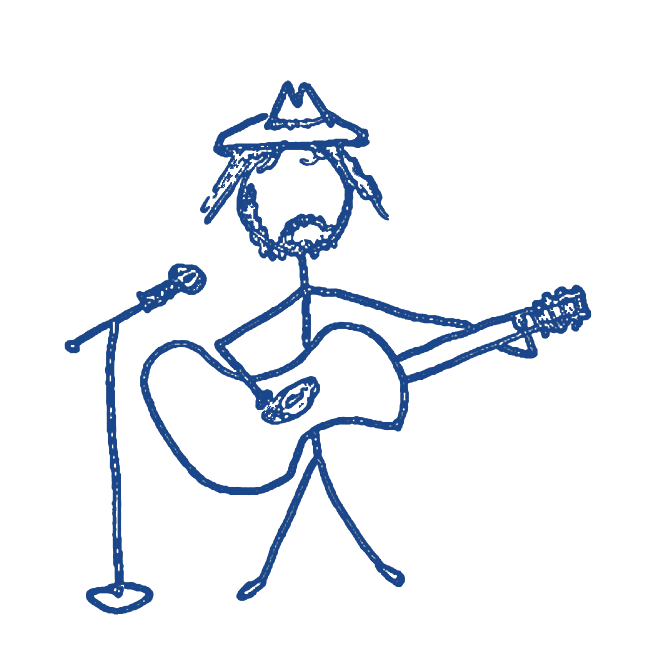
It's been quite a learning curve for me, being the late-starter that I am ("Austin's oldest newbie musician" a few short years ago). Below, you'll find my Top Five Live, a set of rules-of-thumb for all my singer-songwriter friends (self included) who perform original material.
1. Respect the audience. The crowd is the best barometer for your songs. Guy Clark said he didn't consider a song completely written until he'd played it for an audience a few times, and I agree. Even once I'm satisfied with the music and lyrics, the crowd's response often suggests which parts to emphasize when I play it.
2. Enunciate, dammit! What good are your clever lyrics if nobody can understand them through the PA system? If you believe in your song, give the audience a chance to appreciate it in all its glory. Also, slow down your comments between songs, especially if you use reverb in your vocals. Too often all the crowd hears is mumble mumble, mumble, followed by your weak laugh to indicate a punchline.
3. Keep intros short. As Jack Pledge once said to me, "If your song needs a long, spoken introduction, then maybe you're not done writing it." Put another way, have faith in your own material. Explaining a song to the audience ahead of time suggests that it doesn't tell its story as well as it should, or that without this information, it's impossible to enjoy the song.
4. Let the audience participate. Some songs seem to invite the crowd to sing along; however, some singer-songwriters seem determined to deprive the audience of this delight (see October 9 entry). Why trick them with odd lyrical phrasings or rhythms in those singalong parts? Likewise, if the crowd gives you a big ovation after a song, let them build up and wind down naturally. Too many performers rush the audience reaction, as if they have no time for that kind of dilly-dallying.
5. Use pauses for good effect. Keep the show moving at the right pace, but don't feel obligated to fill every moment of your time with song or banter. Better to give the audience a short rest than to blabber whatever pops into your head between songs. (NOTE: I must admit that I sometimes find it easier to give this advice than follow it.)

 RSS Feed
RSS Feed